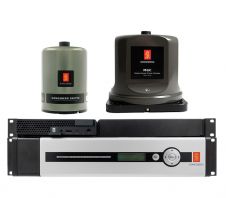Search for talent is hydrographic industry’s biggest challenge
Five questions on the state of the hydrographic industry
Dave Neff is the hydrographer and geospatial programme director at Woolpert. In this interview, he discusses the biggest challenges for the hydrographic industry in the coming years, the technological developments that will be the main drivers, his opinion on the debate statement that hydrographic surveyors will be replaced by robotization and AI in ten years’ time, the types of survey projects paramount for Woolpert in the coming years, and how he would prioritize technology investments in the organization.
What do you see as the biggest challenges for the hydrographic industry as a whole in the coming years?
The biggest challenge is talent. Due to the current and foreseeable growth in the maritime marketplace, there is a high demand for talented hydrographic technicians and personnel that outweighs the supply. Hydrography is a complex profession requiring a myriad of skills, including sonar technicians, vessel captains, geodesists and data processing specialists, to name just a few. Additionally, technology advancements in the hydrographic industry are fast paced, requiring a dedicated talent pool to usher these innovations into existing workflows and effectively realize their efficiency gains. While there are many outstanding programmes across the country focused on different aspects of the profession, there is a growing need for a guided curriculum that programmes can adopt to best prepare students for a career in hydrography.
Looking at hydrography, which technological developments do you expect to be the main drivers in the coming years?
Sonar and processing software advancements.
Hardware innovation typically drives software innovation. Each generation of sonar advancement allows hydrographers to acquire more data, at higher density and faster speeds. While these hardware advancements will allow for the scalability of data acquisition campaigns – collecting more data in less time – they will create a strain on data processing pipelines, forcing innovation of data management and processing software.
Telepresence and cloud-based solutions.
The hydrographic industry will continue to benefit from the migration of all industries from the brick-and-mortar office paradigm to the virtual workforce. With the advancement of cloud-based processing and data hosting technology, hydrographic professionals will be able to move large amounts of geospatial data through modern data pipelines at a much faster pace. These advancements will foster a scalable, real-time connection between acquisition teams and processing teams.
Autonomous vessels.
While autonomous survey vessels are effective in several hydrographic applications, broad adoption across the maritime industry has a long way to go. Vessel capability, situational awareness and maritime regulations are just a few of the challenges ahead of this technology.
Debate statement: “In ten years’ time, hydrographic surveyors will have been replaced by robotization and AI.” Do you: strongly agree, somewhat agree, neither agree nor disagree, somewhat disagree or strongly disagree? Please elucidate.
I strongly disagree with this statement. As autonomous vessel providers enter the hydrographic space, jobs are being created rather than lost. Conceptually, as autonomous survey craft are adopted into large-scale mapping projects, the need for certain vessel-based skills will decrease, while the need for others will increase. While autonomous vessels can be compelling tools for mapping campaigns, they still need to be cared for by humans. This care includes monitoring, maintenance and fleet management, to name a few examples. Additionally, autonomous vessels will add scalability.
As these new tools bring efficiency to acquisition efforts, they will enable larger amounts of data to be collected at lower costs than traditional shipborne campaigns. This increase in acquisition efficiency will result in a need for more data processing analysts and reporting professionals.
Which types of survey projects are paramount for your organization in the coming years?
Large-scale coastal mapping programmes are of great interest. Considering the effects of the changing environment (i.e. sea-level rise, increasing storm severity, etc.), understanding the depths and dynamics of our coastal environments is paramount for the challenges ahead. Also, marine-based renewable energy is a developing market space. As more investment is being made in offshore wind energy, wave energy and other marine-based renewable technologies, the hydrographic survey industry will play a critical part in advancing the space.
How would you prioritize technology investments in your organization over the next couple of years?
As technology leaders in the hydrographic industry, we are constantly looking to innovate our workflows through several avenues. Sensor development and adoption is a key strategy. As the next generation of multibeam sonars and topobathy Lidar sensors are developed and released, we will be early adopters. These sensor advancements will allow our group to collect data at higher densities and higher speeds, adding efficiency to our programmes and value for our clients.
Dave Neff is an ACSM-certified hydrographer and geospatial programme director at Woolpert. Neff has managed hydrographic projects across the US and internationally, and has extensive experience in project management, vessel mobilization, survey planning, data collection and processing, report writing, business development and product generation.


Value staying current with hydrography?
Stay on the map with our expertly curated newsletters.
We provide educational insights, industry updates, and inspiring stories from the world of hydrography to help you learn, grow, and navigate your field with confidence. Don't miss out - subscribe today and ensure you're always informed, educated, and inspired by the latest in hydrographic technology and research.
Choose your newsletter(s)
























